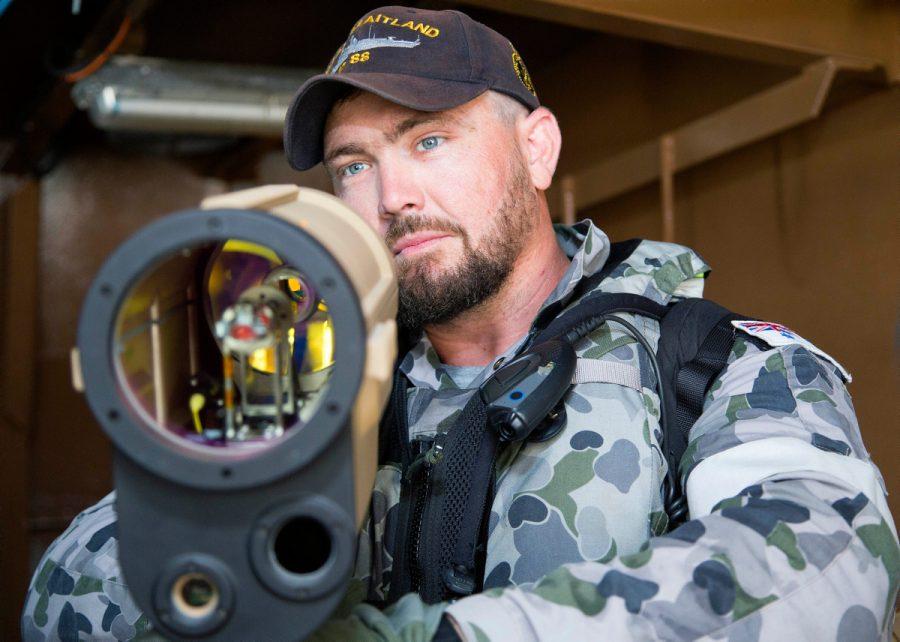Australia’s defence industry should innovate its way into the future
Posted By John Conway and Dougal Robertson on June 10, 2020 @ 06:00

Finding a balance between encouraging Australia’s domestic manufacturing to ensure supply-chain security for critical sectors and not violating free-trade agreements by introducing tariffs and subsidies for ‘strategic industries’ will be a tough task for the government.
As a member of the National COVID-19 Coordination Commission, former Dow Chemical chief Andrew Liveris is tasked with developing a long-term strategy to retool Australian manufacturing. Liveris says [1] that, in Australia, support and tax credits for research and development have basically disappeared while other countries have massive credits in place to encourage innovation and scalability. He highlights health, defence and cyber as vital sectors of the economy.
Defence faces significant risks in any disruption to supply chains [2]. The planned capital investment budget for 2019–20 is a shade under $12 billion. Chunks of this will be spent in Australia, including building the army’s Hawkei protected mobility vehicle and Attack-class submarines, but most of those supply chains reach directly back to the US. Equipment delivery and munitions are secure in the interim, but the pandemic highlights the paucity of defence equipment manufactured here.
The ‘onshoring’ of defence manufacturing isn’t realistic for Australia because there’s not much we can build without major structural readjustments to defence policy and the economy.
While the political, military and intelligence relationship with the US is close, there are different rules in play for the US defence industry. The US approach has always been America first. That’s no surprise; Australian dollars can’t compete. US Air Force funding for 2020 is US$204.8 billion ($294 billion), for example. While Australia spends around $105 million per day on all of Defence, the USAF alone spends eight times that amount.
Programs like the MQ-4C Triton drone, which may have a production ‘pause’ for two years [3], show how little say Australia has in the production and development of high-end weapon systems when the manufacturing base is in the US. We will rely on the US and to a lesser extent Europe for major systems for a long time to come.
Instead, it would be smarter for us to develop technology and design solutions that maximise human performance and information advantages. Some of these defence technologies in robotics, artificial intelligence and precision engineering could have dual uses in agriculture, education or health.
Rather than building heavy equipment, we need to create big ideas and turn them into physical systems. This was Liveris’s approach in the US, where he led the Advanced Manufacturing Partnership [4] involving government, industry and academia.
Currently, investment here is split between the Next Generation Technologies Fund and the Defence Innovation Hub. The fund and the hub are allocated $73 million and $64 million, respectively, per year. Both the fund and hub are focused on small to medium-sized enterprises and provide limited grant allocation. For larger businesses, any R&D money comes out of their profits. Cost allowances for R&D are available only after a contract is awarded, putting all the development risk onto the contractor.
While tax concessions are available, R&D investment is a deduction from earnings before interest, taxes, depreciation and amortisation that only becomes available at the conclusion of a financial year and is further delayed through the payment claims system.
Australian defence industry must invest in R&D and avoid becoming an integration, assembly and sustainment provider.
Unfortunately, Defence retains a central-planning mindset of picking winners instead of taking a collaborative approach to solving problems. This limits the scope of innovation to developing solutions already defined by Defence and avoids engaging with or incubating emerging and disruptive technologies. It’s a sure-fire way to build the next Leyland P-76 [5].
More than a third of Australia’s federal R&D budget goes through [6] tax incentives to the finance, mining and technology sectors. The opposite approach is applied in Israel, where the Innovation Authority [7] is funded to provide solutions to challenges facing the ‘Israeli innovation ecosystem’ and support industry R&D.
The success stories in Australian defence industry typify the clever application of ideas and human capital. Boeing Australia initially developed the ‘loyal wingman [8]’ drone as an internal project. It was able to do so because the company has deep pockets and because it could draw on a local team of innovative problem-solvers who understood the unique characteristics of Australia’s strategic environment.
The fourth industrial revolution provides multiple avenues for disruptive technology to emerge in artificial intelligence, computer-aided decision-making and autonomous and teamed systems. Mastering these technologies will be less resource intensive than manufacturing physical equipment and systems but will require a similar investment in capital.
The answer to defence supply-chain disruption isn’t necessarily building equipment here. And it certainly doesn’t lie in rebuilding tariff walls pulled down in the 1980 and 1990s. The answer must come from using our human and information advantages to enable industry and academia to maximise Australia’s security. The key to this will be effective Australian R&D.
Article printed from The Strategist: https://aspistrategist.ru
URL to article: /australias-defence-industry-should-innovate-its-way-into-the-future/
URLs in this post:
[1] Liveris says: https://www.afr.com/politics/liveris-calls-the-start-of-the-on-shoring-era-20200408-p54i37
[2] supply chains: /supply-chain-security-lessons-from-australias-defence-industry/
[3] pause’ for two years: https://adbr.com.au/raaf-triton-program-at-risk/
[4] Advanced Manufacturing Partnership: https://obamawhitehouse.archives.gov/the-press-office/2011/06/24/president-obama-launches-advanced-manufacturing-partnership
[5] Leyland P-76: https://www.drive.com.au/motor-news/legend-of-the-lemon-20130613-2o7nf?
[6] goes through: https://www.smh.com.au/politics/federal/worrying-trend-in-australian-research-and-development-20180705-p4zpnh.html
[7] Innovation Authority: https://innovationisrael.org.il/en/contentpage/strategy-and-policy
[8] loyal wingman: https://www.defensenews.com/air/2020/05/04/boeing-rolls-out-australias-first-loyal-wingman-combat-drone/
Click here to print.